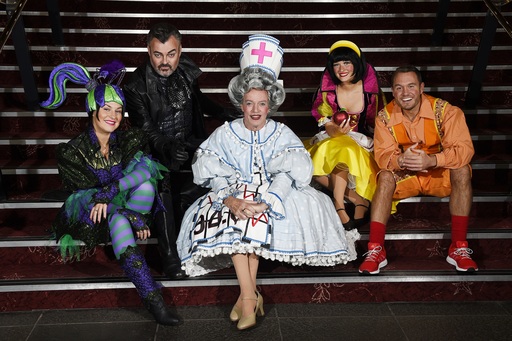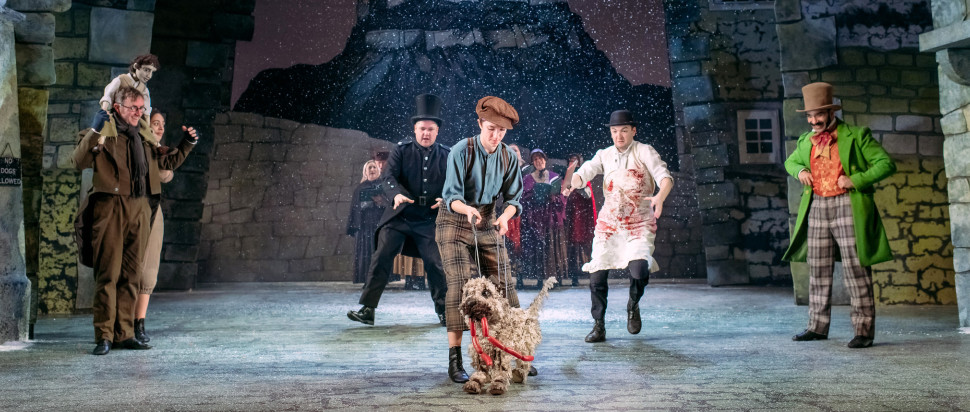An American's Guide to Scottish Panto
One American begins to get to grips with that uniquely British art form – panto
After five holiday seasons as a resident of Scotland, I feel that it's finally time to demystify British pantomime for myself and anyone who's curious. Panto strikes me as a quintessential cultural art form, reflected in diluted iterations in North American productions of The Nutcracker and so on. It has its own vocabulary, tropes, and traditions; locals are always somewhat shocked to learn just how clueless I am. Looking in from the outside, panto seems to make use of a striking number of historical performance tropes. It plays with notions of gender, disability, sex, and class in a truly unique way.
One of the things that fascinates me most about panto is its origins. Pantomime shares fewer elements with the theatre we know today than it does with Commedia dell'Arte and ancient Greek theatre – it has archetypes and formulas, and it uniformly invites (and depends on) audience participation. It is an evolved but entirely recognisable form of these rare and highly prescriptive genres. Theatres across Scotland do productions of the same name, but they are anything but repetitive. Productions seem highly localised, and some of them are even set in the towns in which they're performed.

Clare Gray, Grant Stott, Allan Stewart, Francesca Ross and Jordan Young in Snow White and the Seven Dwarfs
The word I hear thrown around most is "accessibility" – sometimes pejoratively, put up as a barrier between pantomime and other, more "high-brow" forms of theatre. This kind of attitude always raises alarm bells for me; as a theatre person from an academic background, I am dedicated to the belief that taste, creativity, and culture should know no bounds. Panto is known for bringing in significantly more money to theatres than the usual fare, and it is enjoyed by a much broader (read: lower-income) demographic. Not only do these stereotypes further stratify the socio-economic divide between taste-makers and the working class, but they harm year-round theatre as well. In any case, this discussion is better suited to another venue and another time (wink wink, nudge nudge) – for now, read along with me as I digest some of Scotland's myriad holiday offerings for all ages this year.
To start, Inverclyde's Beacon Arts Centre is offering Aladdin, a fairytale parody set in Greenock. The story follows elements of the classic fairytale with a local twist – my confused American brain is still trying to wrap itself around names like Widow Twankey, Wishee Washee, and Wee Jeannie (the Genie). The show runs from 9 to 31 December.
Next up is a wide variety of Snow White and the Seven Dwarfs adaptations. Edinburgh's Festival Theatre promises plenty of audience participation for all ages, with Francesca Ross in the title role. The show runs from 17 December to 22 January. St. Andrew's Byre Theatre is running a new adaptation by Gordon Barr from 1 to 31 December, and Dundee's Whitehall Theatre is putting up Graeme Neil Smith's new version from 10 to 23 December.
The Royal Lyceum is producing An Edinburgh Christmas Carol (24 Nov to 31 Dec), which returns after a highly successful run in 2019. The Macrobert Arts Centre presents Maw Goose (2-31 Dec) after a two-year hiatus, featuring Brido Hingwy as the Panto Dame. Perth Theatre will bring Jack and the Beanstalk to the holiday stage from 25 Nov to 31 Dec, complete with an online form through which audience members can request a live shout-out. The same shout-out form is in use at Glasgow's Tron Theatre, staging Johnny McKnight's The Wonderful Wizard of Oz (Until 8 Jan) after two years of cancellation. Whether you're a seasoned panto-goer or a wonder-filled newbie like me, Scottish panto offers a mix of the familiar and the outlandish to delight every kind of audience this holiday season.
